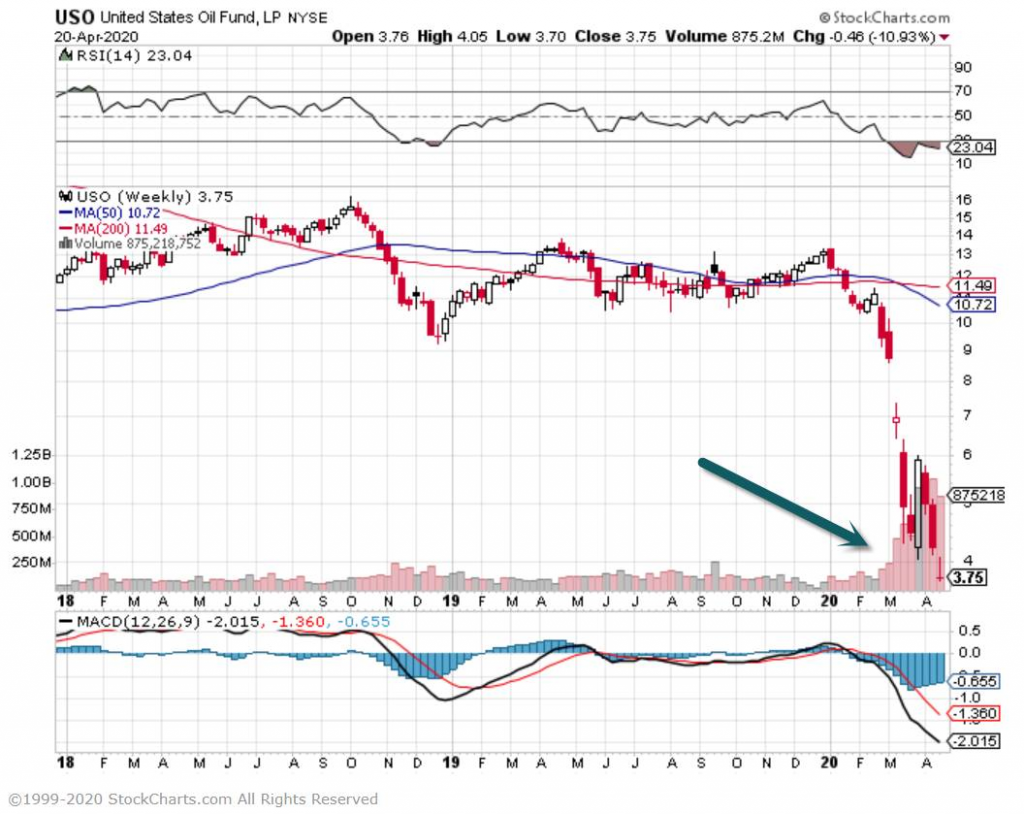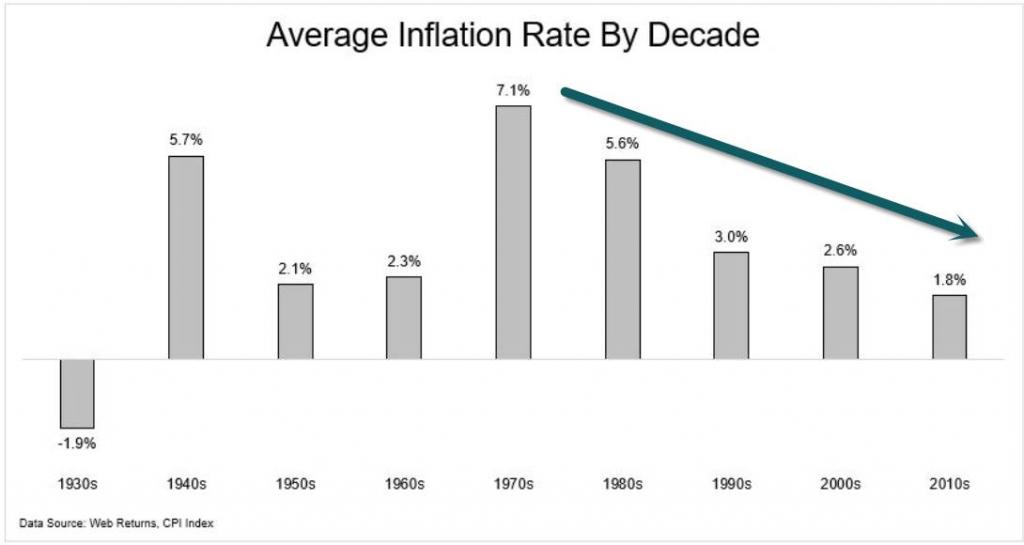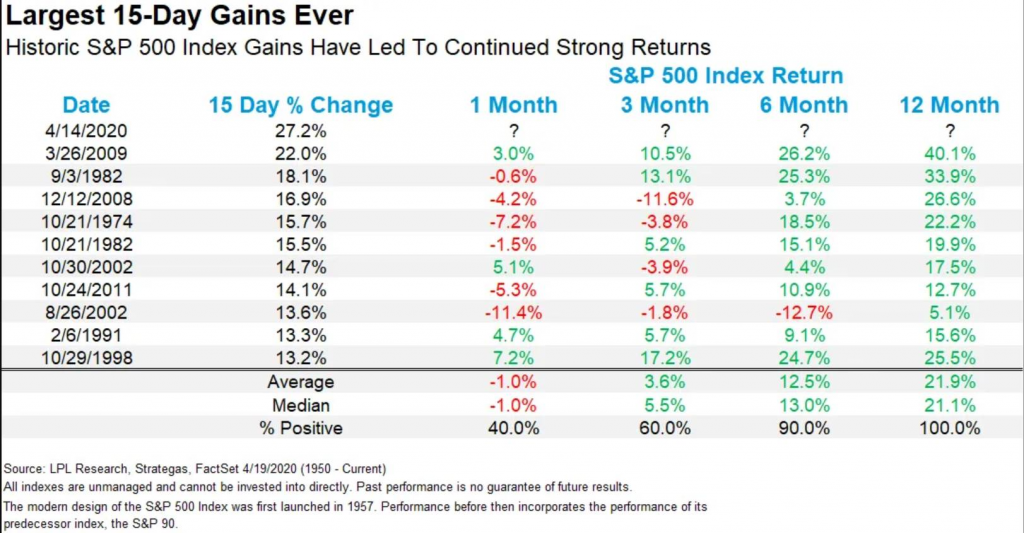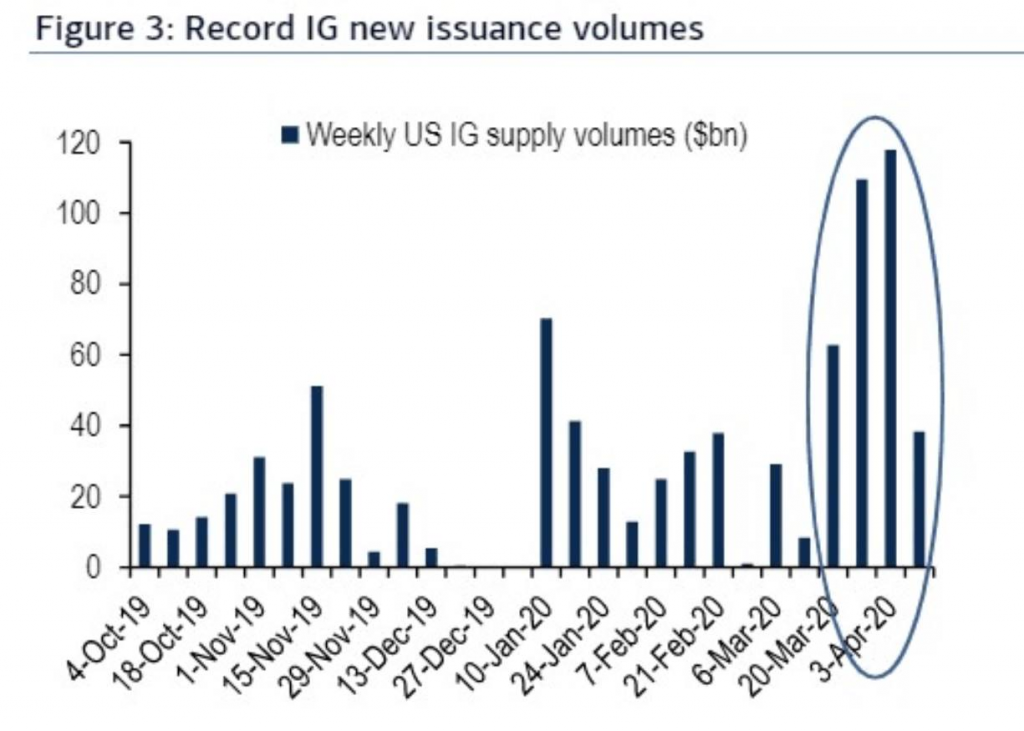1.Record Oil Collapse…USO ETF See Record Inflows.
USO-Record $552m inflows on Friday….$1.6B for the week

2.Breakeven for U.S. Wells.
Source: Longview Economics
The Daily Shot https://blogs.wsj.com/dailyshot/2020/04/21/the-daily-shot-extreme-demand-for-floating-storage-as-crude-oil-prices-turn-negative/
3.S&P 1500 Sector Weightings — Energy Now the Smallest


With oil prices continuing to plunge, the Energy sector is now officially the smallest of the eleven major sectors in the S&P 1500, which is made up of large-caps, mid-caps, and small-caps. Energy makes up just 2.63% of the S&P 1500, which is 2 basis points lower than the next smallest sector — Materials — at 2.65%. Real Estate and Utilities are the next smallest sectors with weightings of 3.41% and 3.49%, respectively.
At the top of the food chain is Technology with a weighting of 24.78%, or about 10x the size of Energy. Health Care ranks second at 15.71%. Combined, Technology and Health Care make up more than 40% of the S&P 1500 in this new post-Covid world. The seven smallest sectors have a combined weighting that is still less than the weighting of Tech and Health Care.
Even more remarkable is how big some of the largest individual companies are compared to entire sectors of the economy. Below we show the market cap of the entire S&P 1500 Energy, Materials, Real Estate, and Utilities sectors versus the market caps of the four largest stocks in the S&P 1500 — Microsoft (MSFT), Apple (AAPL), Amazon (AMZN), and Alphabet (GOOGL). Microsoft is now nearly two times as large as the entire Energy and Materials sectors, or put another way, the entire Energy and Materials sectors combined are just barely larger than Microsoft (MSFT). Apple and Amazon as well are both larger than the four smallest sectors of the market. And for Alphabet (GOOGL), its market cap puts it right in between the size of the entire Materials and Real Estate sectors. Combined, the four largest stocks make up about 17% of the S&P 1500, while the four smallest sectors in the index make up just 12.2% of the index. There are 339 individual stocks across the four smallest sectors in the S&P 1500.
©2020 Bespoke Investment Group
Terms & Privacy · Follow us on Twitter · Read our Blog · Listen to our Podcast
4.Average Inflation Rate by Decade…40 Years of Dropping Inflation.

Is Inflation Coming Back?-by Michael Batnick
5.Market History After Big 15 Day Gains.
As shown in the LPL Chart of the Day, the S&P 500 was up nine of 10 times six months later and higher every single time a year later after the previous best 15-day gains ever. Be aware though, some of the returns in the near-term were weak, suggesting a pullback after such a strong move is likely. Still, this much strength in such a short timeframe could very well suggest the rest of 2020 could have bulls smiling.

6.What Happens After Bad GDP Quarters?
Edward Jones
https://www.edwardjones.com/market-news-guidance/quarterly-market-outlook/economic-outlook.html
7.Agriculture ETFs Break Well Below 2008 Levels.

DBA TOP HOLDINGS
https://etfdb.com/etf/DBA/#holdings
8.70% of PPP Loans are Less than $150k
T SLOK Deutsche Bank
9.Record Investment Grade Bond Issuance.

Exxon borrows $9.5 billion as investment-grade companies fill up war chests ahead of earningsBy Joy Wiltermuth
Exxon Mobil Corp., undeterred by sinking oil prices, borrowed another $9.5 billion in the U.S. corporate bond market on Monday, adding to the rush of companies building up a war chest of cash amid the coronavirus pandemic.
The oil and gas giant sold a five-part package of bonds, with the shortest parcel due April 2023 fetching a yield of 1.571%, while its 30-year slug of bonds cleared at a yield of 3.452%, according to a person with direct knowledge of the deal.
10.Lessons from Coronavirus: We Are More Resilient Than We Feel
Research has shown quite convincingly that our default mode is resilience.
When a threat arrives, we tend to focus our initial attention on it. As we narrow our attention, the threat is magnified, and our sense of anxiety heightens.
The coronavirus pandemic has thus brought into stark relief our individual and collective vulnerability. This initial assessment is not fictional. Our vulnerability is a fact. It is truth. But it is not the whole truth. On the other side of our vulnerability is the truth of our deep resilience.
Here’s a quick self-assessment. Answer the following questions as Generally True (GT) or Generally False (GF):
1. I am able to adapt when changes occur.
2. I can deal with whatever comes my way.
3. I try to see the humorous side of things when I am faced with problems.
4. Having to cope with stress can make me stronger.
5. I tend to bounce back after illness, injury or other hardships.
6. I believe I can achieve my goals, even if there are obstacles.
7. Under pressure, I stay focused and think clearly.
8. I am not easily discouraged by failure.
9. I think of myself as a strong person when dealing with life’s challenges and difficulties.
10. I am able to handle unpleasant or painful feelings like sadness, fear, and anger.
If you answer ‘GT’ to most of the questions (adapted from the Connors-Davidson Brief Resilience Scale), you may consider yourself a resilient individual.
As an area of research, the concept of psychological resilience has been around for a while. Like other big concepts in psychology (such as intelligence or personality), a precise, universally agreed-upon definition is hard to come by. But in general, resilience is most widely used to refer to one’s ability to undergo adversity without suffering debilitating effects. For instance, at-risk children demonstrate resilience if they nevertheless achieve certain social competencies (e.g. the ability to trust others) or developmental tasks (e.g.: school success).
The pioneering researchers Ann Masten and Norman Garmezy focused their study on three related resilience phenomena: good outcomes in high-risk children, sustained competence in children under stress, and recovery from trauma. They defined psychological resilience as, “the process of, capacity for, or outcome of successful adaptation despite challenging or threatening circumstances.”
article continues after advertisement
Since the 1990s, resilience research with both children and adults has shown quite convincingly that resilience is our default mode. For example, Lisa Butler of Stanford University and her colleagues, in a study following over 1,200 individuals for 6 months after the 9-11 attacks, found that “most individuals exposed—even directly—to terrorism or other large-scale collective trauma experiences are not severely traumatized, but instead, exhibit remarkable resilience.”
Another well-known study conducted after 9-11 examined the prevalence of resilience (defined as having either one or no PTSD symptoms) in a sample of over 2,500 New Yorkers during the six months following the attack. Resilience was observed in over 65% of the sample. Masten and Garmezy, in their own work with children, concluded that “human psychological development is highly buffered”—that is, well-protected from failure and designed to succeed. We are more resilient than we are vulnerable.
It is tempting, and common, to think of resilience as chiefly the property of individuals—something you have more or less of. And indeed, several individual characteristics, such as intelligence, Big Five personality traits, high self-efficacy, internal locus of control, and psychological flexibility have been identified as predictors of resilience. For example, Masten and Garmezy found that children do better under adverse conditions if they are “good learners and problem-solvers… engaging to other people, and…have areas of competence and perceived efficacy valued by self or society.” Individual characteristics matter.
However, current research suggests that resilience is not so much a trait but a dynamic, reciprocal process, responsive to circumstances and contextual conditions. In a recent review, Australian researchers Gemma Aburn, Merryn Gott and Karen Hoare note, “One could show great personal strength, courage and adaptability in one setting and area of life—for example, work—but may struggle and have tough hurdles to overcome in one’s personal life.” By this definition “an individual can be resilient one day but not the next” depending on the particular environments in which individuals may be embedded at different times in their lives.
article continues after advertisement
In fact, research has tended to show that environmental and contextual characteristics predict resilience better than individual traits. For example, Arnold Sameroff and Katherine Rosenblum, two leading scholars on resilience, have found that “when the relative contribution of early resilience and environmental challenges to later child mental health and academic achievement were compared in a longitudinal study from birth to adolescence, indicators of child resilience, such as the behavioral and emotional self-regulation characteristic of good mental health, and the cognitive self-regulation characteristic of high intelligence contributed to later competence.” And yet, the authors note, “the effects of such individual resilience did not overcome the effects of high environmental challenge, such as poor parenting, antisocial peers, low-resource communities, and economic hardship.“ Social conditions matter.
One such factor found to matter greatly to resilience is social relationships, both past and present. For example, early secure attachment has long been linked in the literature to higher resilience, in part as it fosters increased self-efficacy and self-care practices. Masten and Garmezy famously found, “Children who experience chronic adversity fare better or recover more successfully when they have a positive relationship with a competent adult.”
While childhood relations play an important role in resilience, current social support is probably even more important, and research suggests that both the size and quality of the social support network are linked to resilience. Social support aids resilience via multiple psychological and behavioral mechanisms. For example, it may motivate people to adopt healthy behaviors, help them appraise stressful events as less threatening, and improve their self-esteem.
article continues after advertisement
In light of the literature, perhaps the best way for us to understand resilience is as a “bidirectional relationship between systems-level resilience…and individual resilience.” In other words, one is more likely to choose effective strategies (such as Active Coping—a goal-directed, non-avoidant effort to mitigate the negative effect of trauma) if their developmental environment allowed their resilience traits (such as self-efficacy) to develop properly, and if the current environment supports, encourages, and models such coping.
The take-home message from this rough summary is two-fold:
First, your own resilience in the face of adversity is not completely up to you. Much of your success or failure will depend on the luck of the draw—whether the particular demands of the specific threat fit well with your particular skills, experiences, and tendencies. Moreover, past and present external conditions (both of which are significantly out of our control) factor heavily in our ability to “do” resilience—develop and deploy effective coping skills.
Second, some aspects of your resilience are indeed up to you. The decisions you make during stressful times matter. Among the most useful are:
1. Rather than isolate—nurture and invest in your social relationship (intimate, familial, communal); be useful to others.
2. Rather than self-flagellation—increase self-care; become intentional about incorporating into your routine those activities that give you a sense of meaning, joy, peace, and solace.
3. Rather than freezing in rigidity—open up to flexibility. Bend so as not to break; accept your feelings, and consult your values and goals in making decisions; seek to adapt and find opportunity in crisis; assess your situation fairly in a broad perspective; don’t buy the first thought that comes to mind; check the facts, and tell yourself the truth.
4. Rather than avoid or worry—take problem-solving action. Focus on those aspects of your situation that are under your control; accept and face the challenge the world has placed before you. Instead of reacting from conditioned habit, respond from conscious choice.
Facebook/LinkedIn image: Jacob Lund/Shutterstock




